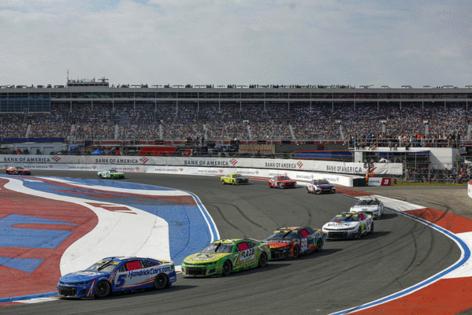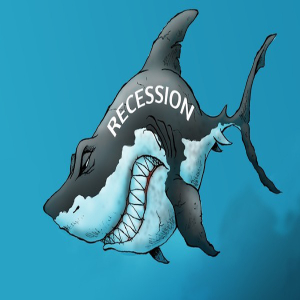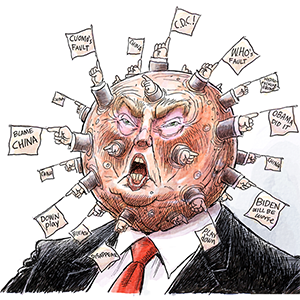Why reconfigured Charlotte Roval could mean unprecedented action in NASCAR playoff race
Published in Auto Racing
Any NASCAR race on a road course allows skills and strategies to shine.
The playoff race at Charlotte Motor Speedway will be run on a unique one — the “Roval,” which features 17 turns over 2.28 miles — for the seventh straight year. It’s a fall tradition that began with Ryan Blaney, now the reigning Cup Series champion, stealing the inaugural win in 2018 following a late wreck involving Jimmie Johnson.
This year’s main event, scheduled for 2 p.m. Sunday, could be the most competitive yet.
Coming out of the course’s fifth turn, located in front of the backstretch near the traditional Turn 2, race cars will continue on a new straightaway instead of making a quick right-hand turn. It almost runs parallel with the banked turns on the right side of the track, where cars will be racing in the opposite direction.
The new straightaway starts to bend — forming the sixth turn of the newly-designed Roval — as the course nears the traditional Turn 1. That leads to a new Turn 7, which will force drivers to slow down and nearly make a full U-turn as they drive onto the oval.
“This will be a show,” said Greg Walter, the longtime executive promoted to CMS track president in May. “You want something that is different. We had this culture of being constructively discontent. ‘How do you go from good to great?’ ‘How do you go from great to remarkable?’ This is all about the fans. We’re not doing this because we want to spend money just to build a new course. This is about creating something that gives NASCAR fans something to enjoy.
“Drivers are gonna complain about it, because it’s new. The only person who likes change is a baby with a wet diaper. This is creating something new that the audience and fans should enjoy.”
Sharper turns could bring increased action on every lap
Speedway Motorsports announced these reconfigurations, which aim to create additional passing opportunities and make the race more competitive, during the Coca-Cola 600 weekend in May.
On top of its anticipated racing benefits, the hairpin that follows the redesigned Turn 6 will provide a unique visual for spectators in the grandstands. Cars will be moving in opposite directions, and the entire course should be viewable from any seat — the only road course where that’s the case.
In addition to the much heavier braking zone established by the new Turn 7, there is now a much sharper apex in the final chicane on Turn 16.
Coming out of the traditional Turn 4, cars will need to slow down to make an even more difficult turn as they continue moving toward the start/finish line. It’s the spot where Johnson and Martin Truex Jr. spun out during the final lap of the inaugural Roval race.
“It’s almost as if this is a brand-new course for these drivers to run in the playoffs ,” Walter said. “That’s why you’re finding it so unsettling, it’s because they have no idea what to expect. We’ve even made some changes since the first simulation came out.
“But (the Turn 16 changes were) designed to be like in baseball: ‘Bottom of the ninth. Bases loaded. Two outs.’ ”
A continued goal to combine the best of motorsports
The Roval has consistently been a road course that provides an entertaining product.
Before the Roval added a chicane on its backstretch by Turn 10, Mario Andretti ran some laps on the road course that Speedway Motorsports was designing. The Formula 1 World Champion was clear that he’s a purist when it comes to road courses, and that he is certainly not a fan of ones constructed over an infield.
Andretti agreed to make some laps and said he’d only talk about the course if he liked it. He strapped on a GoPro video camera and seemed to become more comfortable as he raced.
His takeaway?
Andretti could tell that cars would end up carrying too much load and force as they headed into the traditional Turns 3 and 4 of the oval, and with the number of road-course turns that now lead into that corner, an addition of another chicane would allow the cars to slow down and potentially increase competition.
It’s been a similar idea now with the advent of these sharper curves in Turns 7 and 16.
Like a dramatic end to a baseball game with the bases loaded and two outs, this year’s Charlotte Roval could wind up concluding with two cars racing side-by-side for the win.
Fans should be able to see all of the action from their seats, or on the brand-new video board with more than five million pixels, and the additions of these tight turns on every lap will only heighten the competition in one of the most unique races in motorsports.
©2024 The Charlotte Observer. Visit at charlotteobserver.com. Distributed by Tribune Content Agency, LLC.







Comments